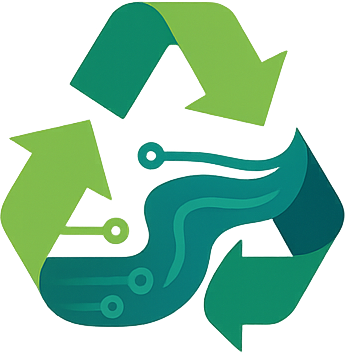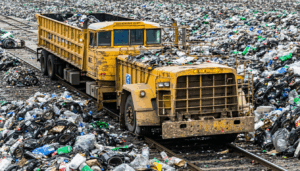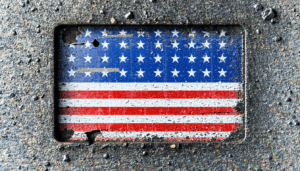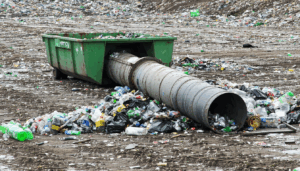In the United States, the safe disposal of pharmaceutical waste has emerged as a pressing environmental and public health concern. With millions of unused or expired medications discarded annually, improper handling poses risks of water contamination, wildlife harm, and even drug misuse. This article delves into the latest developments in pharmaceutical waste disposal, exploring new regulations, innovative solutions, and the impact on communities and industries. As the nation grapples with this hidden crisis, stakeholders are pushing for sustainable practices to protect both people and the planet.
The Scale of Pharmaceutical Waste in the U.S.
The volume of pharmaceutical waste generated in the U.S. is staggering. According to the Environmental Protection Agency (EPA), Americans dispose of approximately 250 million pounds of unused medications each year. Hospitals, pharmacies, and households contribute to this growing problem, often flushing drugs down drains or tossing them into regular trash, leading to environmental hazards.
This waste includes prescription drugs, over-the-counter medications, and veterinary products. When improperly discarded, these substances can seep into groundwater or surface water, affecting aquatic ecosystems. The urgency to address this issue has never been clearer, as traces of pharmaceuticals have been detected in drinking water supplies across multiple states.
New Regulations Shaping Pharmaceutical Waste Disposal
Recent federal and state-level policies aim to curb the risks associated with improper drug disposal. In 2023, the EPA introduced stricter guidelines under the Resource Conservation and Recovery Act (RCRA) for healthcare facilities managing hazardous pharmaceutical waste. These rules mandate proper labeling, storage, and disposal methods to prevent environmental contamination.
Several states have also taken action. For instance, California and Washington have implemented drug take-back programs, requiring pharmacies to provide collection points for unused medications. These initiatives have collected over 1.2 million pounds of drugs since their inception, significantly reducing household waste entering landfills and waterways.
According to Dr. Emily Harper, an environmental scientist at the University of California, “State-led take-back programs are a critical step forward. They not only reduce pollution but also educate the public on safe disposal practices.”
Impact on Stakeholders: From Pharmacies to Patients
The push for better pharmaceutical waste disposal affects a wide range of stakeholders. Pharmacies and healthcare providers face increased compliance costs due to new regulations, with some small businesses struggling to adapt. However, many see long-term benefits in protecting public health and avoiding legal penalties.
Patients also play a vital role. Many are unaware of proper disposal methods, often storing expired drugs at home or discarding them unsafely. Public awareness campaigns, supported by organizations like the Drug Enforcement Administration (DEA), encourage participation in National Prescription Drug Take Back Day events held biannually. In 2022 alone, these events collected over 647,000 pounds of medications nationwide.
Innovative Solutions Emerging in the Industry
Amid regulatory changes, technology offers hope for sustainable pharmaceutical waste disposal. Companies are developing advanced incineration systems that neutralize hazardous compounds without releasing harmful emissions. Others are exploring reverse distribution systems, where unused drugs are returned to manufacturers for safe processing.
Non-profit organizations are also stepping in. For example, Med-Project USA collaborates with local governments to fund free mail-back programs for residents in underserved areas. These efforts aim to bridge gaps in access to disposal resources, particularly in rural communities.
“Technology and community partnerships are key to solving this crisis,” says John Mitchell, CEO of a leading waste management firm. “We’re seeing more investment in eco-friendly solutions than ever before.”
Future Implications and Challenges Ahead
The issue of pharmaceutical waste disposal is far from resolved, but current efforts signal a shift toward accountability and innovation. If successful, these measures could drastically reduce environmental contamination and safeguard public health. However, challenges remain, including funding shortages for take-back programs and inconsistent regulations across states.
Some experts warn that without national coordination, progress may be uneven. Others argue that manufacturers should bear greater responsibility through extended producer responsibility (EPR) laws, which require them to manage the lifecycle of their products. Both perspectives highlight the need for a balanced approach to tackle this complex issue.
In conclusion, the U.S. is at a critical juncture in addressing pharmaceutical waste disposal. With tighter regulations, growing public awareness, and technological advancements, there is potential for meaningful change. Yet, sustained collaboration between policymakers, industry leaders, and citizens will be essential to ensure a cleaner, safer future.
Frequently Asked Questions (FAQs)
1. What is pharmaceutical waste?
Pharmaceutical waste includes unused, expired, or unwanted medications from households, hospitals, and pharmacies. This can range from pills and liquids to medical devices containing drugs.
2. Why is proper disposal important?
Improper disposal can lead to environmental pollution, water contamination, and risks of drug misuse or accidental poisoning. Safe methods protect both ecosystems and public health.
3. How can I dispose of medications safely in the U.S.?
Use designated drug take-back programs at pharmacies or participate in DEA Take Back Day events. If unavailable, follow FDA guidelines to mix drugs with unappealing substances like cat litter before sealing them in a bag for trash disposal.
4. Are there penalties for improper disposal?
Yes, under federal and state laws like RCRA, businesses can face fines for mishandling hazardous waste. Individuals may also face local penalties depending on jurisdiction.
5. What role do manufacturers play?
Some advocate for extended producer responsibility laws to hold manufacturers accountable for funding disposal programs and managing product lifecycles.





